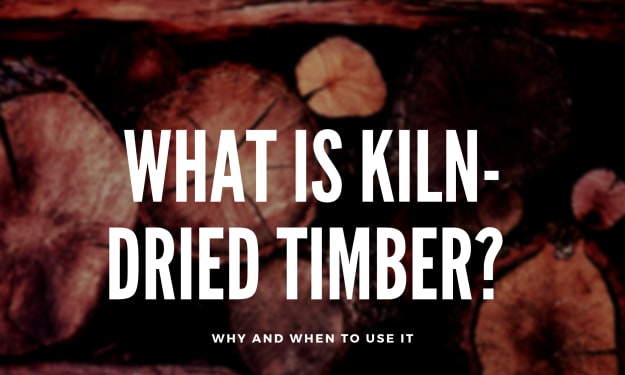How to Choose the Right wood for Woodworking
Right Wood For Your Woodworking Project

For those who are new to the woodworking space, choosing the right wood can be troublesome and very confusing. To add to the confusion, there are literally hundreds of kinds of woods to choose from. Unless you’re quite familiar with the type of wood with their respective properties and uses, you might find it difficult to choose the right wood for your next project. But, worry not. White Knight Consulting which is the biggest timber wood supplier, exporter & manufacturer is here to help. We’ll tell you exactly how to compare different kinds of wood to figure out the best one for your project.
In this article, we will talk about and compare the four most popular types of wood/lumber in use today: hardwood, softwood, plywood, and MDF.
Solid Wood
Solid wood is wood procured directly from trees. It can be referred to as lumber or timber in different places or depending on the wood’s state. Solid lumber is pure wood and not manufactured in any way, though it can be treated or painted/polished to improve its properties.
All solid woods can be broadly divided into two types: softwoods and hardwoods.
If you are considering solid wood for your next project, you must know that all wood is prone to expansion and contraction due to weather. For instance, during rain or when in contact with water, wood boards might expand by absorbing moisture. Similarly, wood lumber will contract by losing moisture during summer or when in direct exposure to sunlight. As a woodworker, you must consider this factor very carefully to select the right wood based on the use.
1. Hardwood
Hardwood is a type of solid wood that comes from deciduous trees, i.e the trees having normally shaped leaves. Examples may include oak and maple.
Hardwoods are generally stronger, harder, and more durable than softwoods, but not always.
Hardwoods are almost always the better choice for woodworking than softwood. They are stronger, more durable and look premium with their naturally dark colours that need no colouring or finishing. Many hardwoods are considered exotic species because of their premium looks and high prices. Yes, hardwoods are generally more expensive than most softwoods. Hardwoods don’t just look good because of their nice hue and unique grain pattern but also they are famous for being very strong and naturally durable to withstand moisture, insect attacks and a range of other vulnerabilities. A high-quality hardwood is the perfect choice for making objects that you want to last for years if not decades.
Because of their darker hues, hardwoods are not generally needed to be painted or stained, but they can be coated with a clear oil or varnish finish to provide an extra layer of safety.
Hardwoods have high density and weight, which can make them not so easy to work with. They are not very easy to cut and can be tough on cutters. Some hardwoods can cause burns when being cut using table saw. Another drawback of hardwoods is that they can be very expensive to buy. Many popular hardwood species such as oak, maple, walnut, cherry, etc. are quite expensive and might not be easily available everywhere.
Fortunately, you can now order hardwood lumber and boards online from retailers like the White Knight Consulting Ltd and get them delivered to your doorstep anywhere in the UK.
2. Softwood
Softwood is a type of wood that is obtained from conifer trees, or trees having cones or needles for leaves. Pine is a popular example.
Many conifer trees are used as Christmas trees for their cone-shaped leaves. Softwoods are generally softer than hardwoods.
Pine is the most popular and one of the most commonly used industrial softwood species. It is easy to identify pine by its unique hue and smell. Another benefit of pine is that it is easily available and generally quite affordable when compared to most hardwoods, yet it shares many hardwood characteristics of strength and durability.
As a softwood, pine is also super easy to work with. It is also prized for its unique color hue, which looks cool both in its natural look and after painting or finishing. That said, pine is also very easy to paint, finish and glue. Pine is easy to cut both with machines or by hand tools. It also doesn’t harm your blades. These are just a few reasons why woodworkers around the world favour pine over many other softwoods and hardwoods.
However, there are also some drawbacks of using pine for woodworking. For one, this wood can be very soft for some projects, such as flooring and outdoor applications and will catch scratches and dents very easily/ So, it might not be the best idea to use pine for heavy-duty applications, such as flooring and heavy-use furniture items. Pine boards, especially wide and long ones, also tend to get curved or warped, which can make it difficult to find a completely straight board.
Manufactured Wood
We’ve already discussed the various benefits and cons of using solid woods, including hardwoods and softwoods, for a project. Now, let’s talk about an alternative type of wood, which is called manufactured wood or engineered wood.
Engineered wood is manufactured in a mill by combining wood and other materials, including glue, plastic, fibre, and others. There are many varieties of engineered wood, such as plywood, blockboard, fibreboard, MDF (medium-density fibreboard), particleboard, etc.
Manufactured woods are often cheaper than solid woods but can be equally or even stronger and more durable than them because they are made by combining different materials.
1. Plywood
Plywood is the most popular type of manufactured wood. It is made by combining thin layers of solid wood (called ply) using glue and specific temperature & pressure conditions such that wood grains are at a cross angle with each other to form a solid, strong and durable board.
Depending on the type, quality, depth and number of plies used, plywood can be of many types and grades. In general, the more plies, the better the plywood quality. A good idea is to check the edges of a plywood to see if there are voids or gaps and make sure that solid layers of wood are used to construct it.
Almost all hardwood species are used to make plywoods, which are used across a variety of applications ranging from construction and furniture making to cabinets, flooring and outdoor projects.
Depending on the plywood type and grade, their price may range from cheap to very expensive. Expensive plywoods are suitable for interior and exterior projects and applications where both the look and durability of the wood are needed. Low grade plywoods may not be very strong and/or attractive to look at, but they are still good enough for use in common projects.
Pros vs Cons of Plywood
There are many benefits of using plywood over solid wood. They are less expensive and easily available in various sizes and dimensions. Plywood is as strong as real wood and even more durable in some cases. There is no expansion or contraction due to weather conditions. It can be made in large sizes and is suitable for use on large surfaces. Plywood is also easy to work with and cuts, finishes and glues easily.
There are some drawbacks to using plywood. Plywoods generally come in 4’x8’ sheets, which are not easy to handle or carry by one person. They need to be cut in order to use. Also, plywoods have rough edges, which can be not attractive to look at and may need to be covered using solid wood chips. Plywood can also sometimes splinter when cutting against the grain.
2. MDF
MDF of fibreboard is a common choice for woodworkers who are looking for the cheapest wood option with good strength and durability. MDF is made by combining food fibres with glue which are then compressed to make solid boards.
MDF is perfect for low-budget projects, such as knockdown furniture. It is not very appealing to look at and is often covered with a layer or veneer or laminate to make it attractive.
You can get in touch with White Knight Consulting Ltd. to know more about the different types of wood and.or to find out the best wood for your particular project, buy online and get it delivered to your place anywhere in the world.





Comments
There are no comments for this story
Be the first to respond and start the conversation.